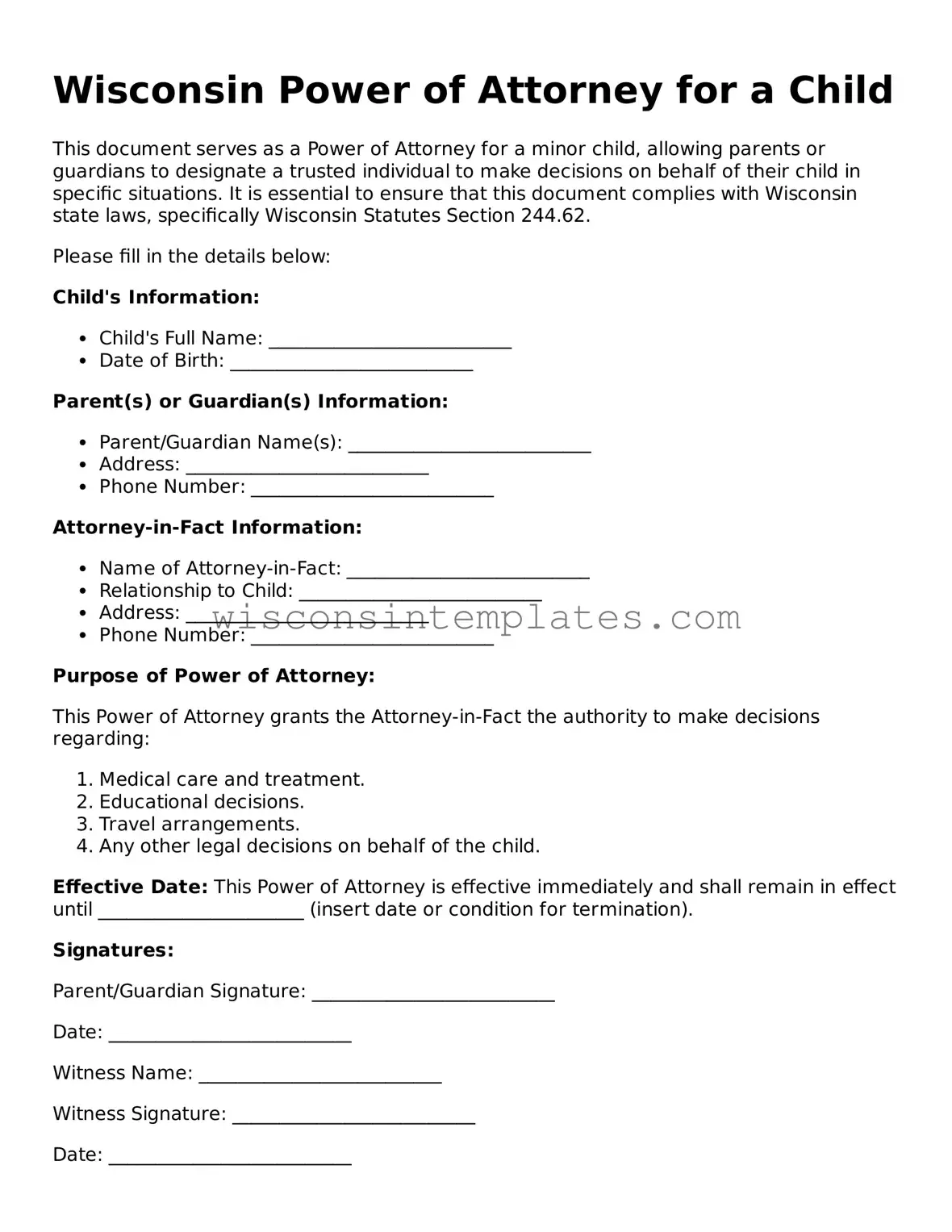Legal Power of Attorney for a Child Form for Wisconsin State
The Wisconsin Power of Attorney for a Child form is a legal document that allows a parent or guardian to designate another adult to make decisions on behalf of their child in specific situations. This form is particularly useful when parents are unavailable due to travel, work commitments, or other circumstances. Understanding its purpose and proper use can help ensure that a child's needs are met when parents cannot be present.
Launch Editor Now
